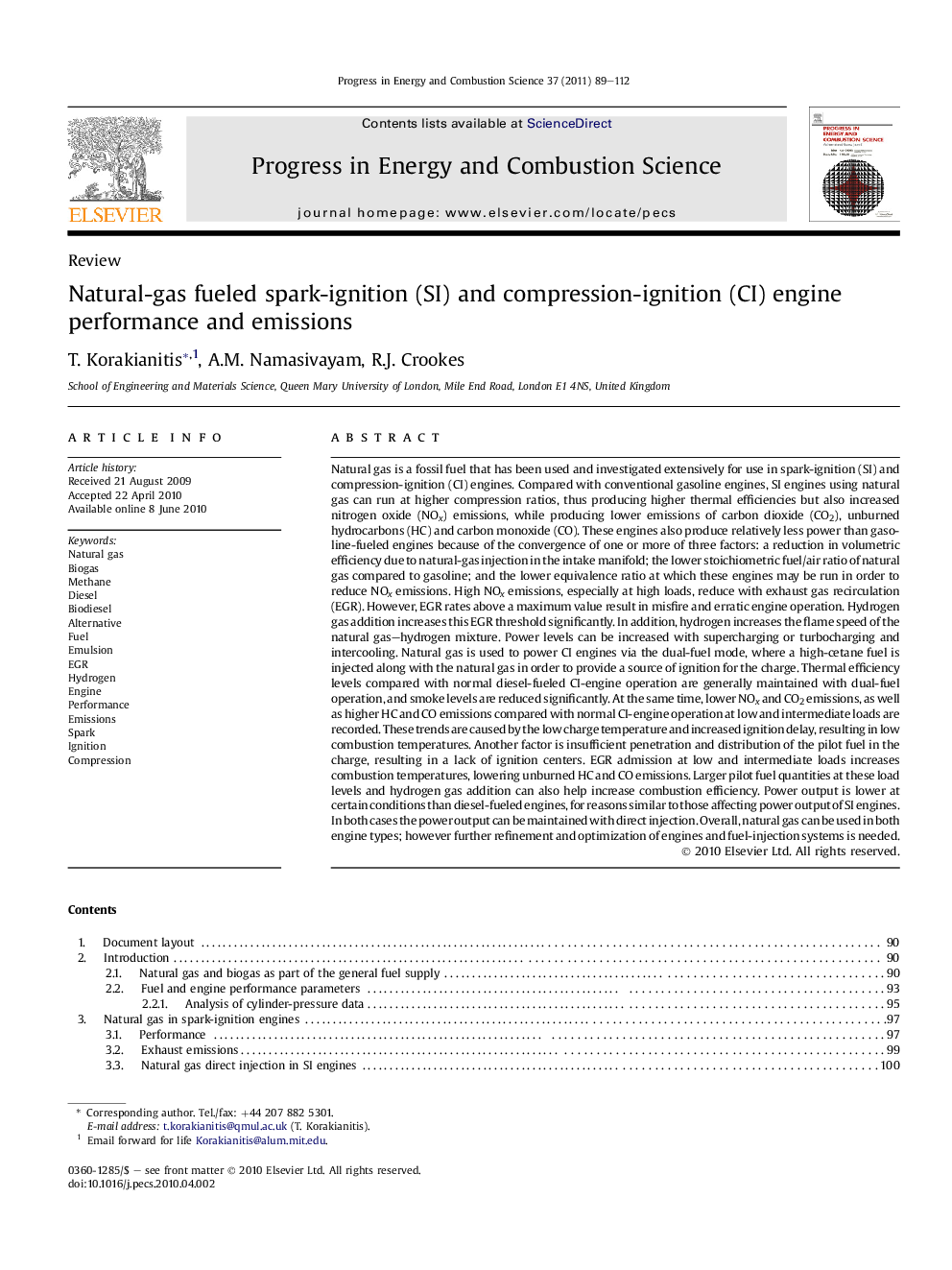| کد مقاله | کد نشریه | سال انتشار | مقاله انگلیسی | نسخه تمام متن |
|---|---|---|---|---|
| 241788 | 466327 | 2011 | 24 صفحه PDF | دانلود رایگان |

Natural gas is a fossil fuel that has been used and investigated extensively for use in spark-ignition (SI) and compression-ignition (CI) engines. Compared with conventional gasoline engines, SI engines using natural gas can run at higher compression ratios, thus producing higher thermal efficiencies but also increased nitrogen oxide (NOx) emissions, while producing lower emissions of carbon dioxide (CO2), unburned hydrocarbons (HC) and carbon monoxide (CO). These engines also produce relatively less power than gasoline-fueled engines because of the convergence of one or more of three factors: a reduction in volumetric efficiency due to natural-gas injection in the intake manifold; the lower stoichiometric fuel/air ratio of natural gas compared to gasoline; and the lower equivalence ratio at which these engines may be run in order to reduce NOx emissions. High NOx emissions, especially at high loads, reduce with exhaust gas recirculation (EGR). However, EGR rates above a maximum value result in misfire and erratic engine operation. Hydrogen gas addition increases this EGR threshold significantly. In addition, hydrogen increases the flame speed of the natural gas–hydrogen mixture. Power levels can be increased with supercharging or turbocharging and intercooling. Natural gas is used to power CI engines via the dual-fuel mode, where a high-cetane fuel is injected along with the natural gas in order to provide a source of ignition for the charge. Thermal efficiency levels compared with normal diesel-fueled CI-engine operation are generally maintained with dual-fuel operation, and smoke levels are reduced significantly. At the same time, lower NOx and CO2 emissions, as well as higher HC and CO emissions compared with normal CI-engine operation at low and intermediate loads are recorded. These trends are caused by the low charge temperature and increased ignition delay, resulting in low combustion temperatures. Another factor is insufficient penetration and distribution of the pilot fuel in the charge, resulting in a lack of ignition centers. EGR admission at low and intermediate loads increases combustion temperatures, lowering unburned HC and CO emissions. Larger pilot fuel quantities at these load levels and hydrogen gas addition can also help increase combustion efficiency. Power output is lower at certain conditions than diesel-fueled engines, for reasons similar to those affecting power output of SI engines. In both cases the power output can be maintained with direct injection. Overall, natural gas can be used in both engine types; however further refinement and optimization of engines and fuel-injection systems is needed.
Journal: Progress in Energy and Combustion Science - Volume 37, Issue 1, February 2011, Pages 89–112